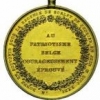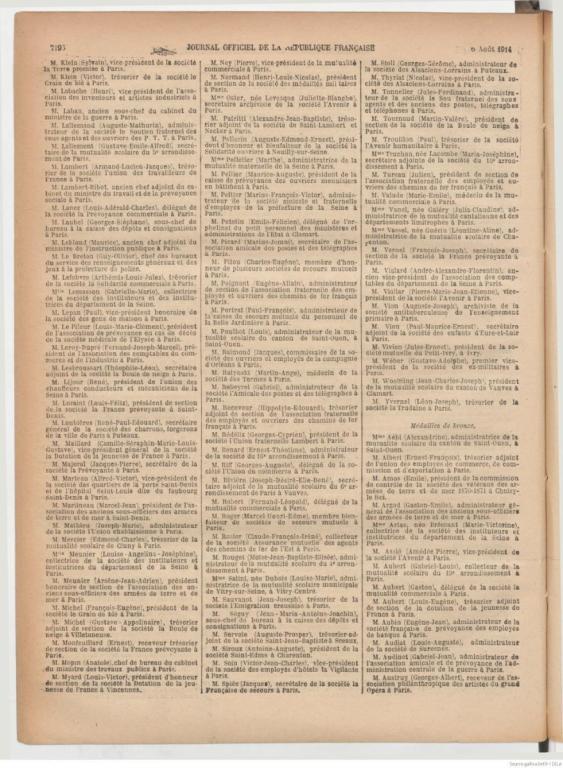-
Posts
1,112 -
Joined
-
Last visited
-
Days Won
1
Hendrik last won the day on March 27 2021
Hendrik had the most liked content!
Profile Information
-
Gender
Male
-
Location
Languedoc, France
Recent Profile Visitors
7,279 profile views
Hendrik's Achievements
-
Hi Noor, Both bars show the maker's mark of Adrien Chobillon (i.e. manufactured between 1905-1979) and the boar's head for being in silver. They are likely to be pre-WW2 (1920's or 30's would be a good guess) although the Sahara bar was awarded for actions as late as 1949. The medal's reverse bears the Paris Mint mark with "2" indicating 2nd class silver (,800 silver content). This type of medal was awarded between 1914 and 1962 ... Regards, Hendrik
-

Belgium Congo - L´Étoile de Service
Hendrik replied to bilylev's topic in Northern European & Baltic States
Hello Jan, The star bears the cypher of King Albert I who reigned between 1909 and 1934. Regards, Hendrik -

I need help in Belgium
Hendrik replied to Igor Ostapenko's topic in Northern European & Baltic States
Hello Igor, Take a chair, sit down and be as amazed as I was at the coincidence : The reverse inscription reads : "V.H. HURST / EN VUE / DE RAMSGATE / 15 JANV. / 1860". The award was duly published in the Belgian official journal (Staatsblad) and refers to the Royal Decree of 15 September 1861 and Ministerial Decree No. 267 of 24 September 1861 awarding the medal to Mr. Hurst and similar silver medals to the crews of the two boats that went to rescue the Daniel's crew. The citation lists the twelve recipients of the silver medal and specifies the circumstances for the bestowal : During its voyage from Antwerp to Liverpool, the ship "Daniel" was caught, on 15 January 1860, by a heavy storm and, through the heavy winds, thrown on the Goodwin Sands, where it sank. Seamen from two vessels, the "Buffalo Gal", of Ramsgate, and the "Briston Pride", of Deal, seeing the danger to which the Belgian ship's crew was exposed, immediately set out to help and, despite the raging storm, managed to get sufficiently close to the ship to receive its crew on board their own vessels and land them at Ramsgate subsequently. The British crews which were decorated were : Buffalo Gal : V.H. Hurst, skipper, Crouck Stephen, Knott John, Deperdus James, Oldfield Stephen, Horton Samuel. Briston Pride : Henry Spears, skipper, Middleton William, Spears Thomas, Spears William, Wilkins Thomas, Tapley Edward. With the valuable help of Mr. M. Twyman of the Margate Historical Society, it has been possible to learn some more on the aftermath of the rescue operation : On the night of 14th January 1860 the Belgian sailing vessel "DANIEL" of Louvain, ran onto the Goodwin Sands in position 51.17N 01.29E. The "DANIEL" was of wooden construction and on a voyage from Antwerp to Liverpool with a cargo of Iron Ore and Bark. On the morning of 15th January the Ramsgate Harbour Steam Tug (probably "AID") towed the vessel off the sands and commenced a slow tow towards the shelter of Ramsgate Harbour. At 3 p.m. the "DANIEL" foundered in the Gull (a channel through the sands), all the crew being saved. The vessel was commanded by Captain Van Yper. So, as you can see, both your medal and mine were for the same action and to members of the same rescue crew !!! Regards, Hendrik -
Hello Jilm, Good question and the answer is yes ... On 13 May 1915 the following instruction saw the light of day (published in the Official Journal of the French Republic on 6 June 1915) : "Dispositions sur le ruban, des marques distinctives de citations. – Les titulaires de plusieurs citations porteront, sur le ruban de la croix de guerre, autant de palmes et d'étoiles que de citations. Les étoiles seront réparties sur une, deux ou trois lignes, de manière à former, suivant leur nombre, soit une ligne (2), soit un triangle (3), soit un losange (4 ou 5). L'étoile distinctive de la citation la plus élevée sera la plus rapprochée du milieu de la poitrine. La palme ( ou les palmes ) surmontera les étoiles. En cas de citation unique, l'étoile ou la palme tiendra le centre du ruban." In short, citation stars will be placed in 1, 2 or 3 lines in order to form a line (2 citations), a triangle (3) or a diamond (4 or 5). The star denoting the highest degree of citation will be placed closest to the middle of the chest. Palm(s) will be placed above the stars. In case of a single citation, the star or palm will be in the centre of the ribbon. That's the theory ... in practice, as citations were received over a period of time, its recipient would in many cases just add the new device on the ribbon without rearranging the old one(s) to comply with the above. Regards, Hendrik
-
Hello Duncan, The medal (yours is the 1st model, 1913-1939) is awarded to "personnel" of the railroads, i.e. without indication of gender. Marie Meillier would indeed have been a female member of the French railway network. Regards, Hendrik
-
Hello Christiaan, You may want to have a look among the "Médailles d'Honneur" (under "Décorations") on http://www.france-phaleristique.com/accueil.htm All official medals are listed there, also medals with a different ribbon - see pictures below - (don't know if you're interested in those as well) and a fair number of non-work related medals as well. I think you may have some fun sifting through them all 🙂 Regards, Hendrik
-
Hello Gents, The Emile Bousquet of Richard's certificate survived the war as indicated by the mention "a fait la campagne". He was still alive to receive the two medals created in 1920 and 1922 ... Bousquet is not an uncommon name in France and those soldiers on the Memorial pages were all KIA. Regards, Hendrik
-
Hello Richard, I confirm he would normally have qualified for the Croix du Combattant later on. When you mentioned 2 medals in your 1st post, they were likely to be either a posthumous award of the Military Medal and the War Cross or the present duo. The Grand Memorial site could only be of help in the first case. For further research on Bousquet you would need the region he was enlisted in and preferably his year of birth and then go through the relevant archives ... needle in a haystack stuff 🙂 Regards, Hendrik
-
Hello Richard, Your soldier seems to have survived the war as he's not in the list of those killed during the war at the end of the unit's war diary (see https://gallica.bnf.fr/ark:/12148/bpt6k63409679/f1.item.texteImage ). Which two medals do you have there ? Pictures would be nice, especially of the diploma ... Regards, Hendrik
-

I need help in Belgium
Hendrik replied to Igor Ostapenko's topic in Northern European & Baltic States
Hello again Werner, It is indeed a smaller (24 mm) 1837-49 type medal made wearable by adding the mural crown attachment - it hasn't been mounted in a circle. There is a silver mark in the rim (sword or dagger, I've never been sure as to what to call it 🙂). Regards, Hendrik








.thumb.jpg.a835fa9c2f4735e3e1c28d016fb3d3bd.jpg)
